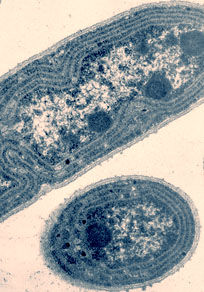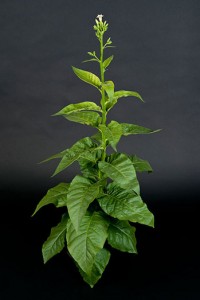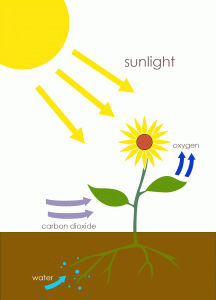Photosynthesis is a process that plants and other living organisms use to convert carbon dioxide, water and light energy into food. Sounds pretty amazing, right? But that’s only the start. Photosynthesis single-handedly supplies all the organic compounds and nearly all the energy that is needed for life on Earth. Simply put, without photosynthesis we would not be alive today. In recent years, a question that has often been asked is whether photosynthesis can be tweaked such that the process becomes faster and more efficient.
-Click here for all the intricate details of photosynthesis! Also, the process is illustrated nicely in this short animated film:


Micrograph of a cyanobacterial species; Synechococcus elongatus. Source: L.A. Sherman and D.M. Sherman, Purdue University
Crucial to photosynthesis is an enzyme called Rubisco. This enzyme is required in the conversion of carbon dioxide to sugar. However, the Rubisco found in plants is inefficient. And so, a team of American and British biologists came up with the idea to “borrow” genes for Rubisco from a cyanobacterial species, called Synechococcus elongates, and genetically engineer them into plants. Formerly known as blue-green algae, cyanobacteria specialize in photosynthesis. Consequently, researchers claim that by meddling with Rubisco in crops, photosynthesis can increase in efficiency by up to 60%.
In the aforementioned experiment, published in Nature, the team of researchers transferred bacterial genes and proteins, including Rubisco, into the tobacco plant, Nicotiana tabacum. As a result, this new hybrid plant could convert carbon dioxide to sugar faster than normal strains of the tobacco plant. When asked how her team of scientists was able to accomplish this feat where other teams had failed before, biochemist Maureen Hanson at Cornell University pointed to the fact that her team also transferrd additional proteins to assist the foreign Rubisco.

A bacterial enzyme was delivered to a sample of Tobacco Plant; Nicotiana tabacum. Source: Rothamsted Research
With crop production technology being a hot field of research, the implications of this study are immensely important. While human population continues to increase at staggeringly fast rates, there are continuously more mouths to feed. “Hacked photosynthesis” may be one way to alleviate the looming problem.
You may be wondering… when will these super-efficient plants be in crop fields near you? Not as soon as you might think. While turbocharged photosynthesis works great in theory, in reality there are a few setbacks. One issue is that cyanobacterial Rubisco has a tendency to react with oxygen. Bacteria deal with this problem by incorporating a protective capsule, called a carboxysome, to ward off oxygen. However, plants lack this defensive shell and so the tobacco plant with bacterial Rubisco wastes significant amounts of energy. Naturally, scientists are currently working on ways for plants to create structures resembling bacterial carboxysomes.

‘Turbo’ photosynthesis could redefine the way we farm crops. Source: Flickr commons, Uploader: Appe Plan
All in all, while the process of turbocharged photosynthesis has yet to be perfected, this scientific finding is a great leap in the direction of higher-yielding and faster-growing crops.
-Imran Mitha

